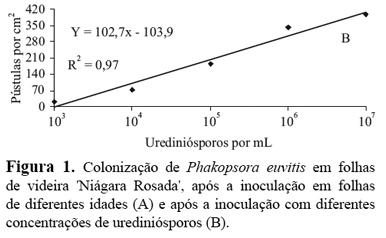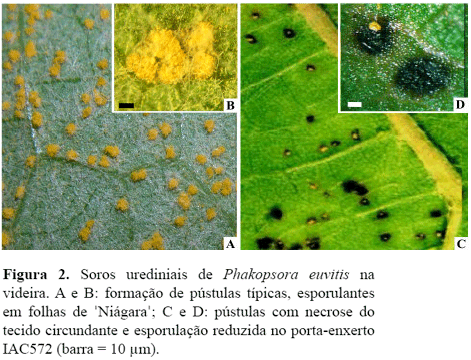The objective of this work was to evaluate the genetic resistance of grape genotypes to rust, caused by the fungus Phakopsora euvitis, and the infection efficiency in relation to leaf age and inoculum concentration. The evaluation was carried out on 15 genotypes, based on the following resistance components: number of pustules (uredia) per cm², size of pustules; number of urediniospores produced per pustules; and latent period. The resistance components, except for the latent period, presented considerable quantitative variation. The multivariate analysis of resistance components discriminated five groups of genotypes. The more resistant genotypes were the rootstocks cultivars IAC313, IAC572, and IAC766, in which the infection efficiency was low, with small pustule sizes, and less urediniospores production, besides hypersensivity response on tissue surrounding the pustules. The infection increases with increasing of inoculum concentration. The rust colonizes young and mature grape leaves.
Phakopsora euvitis; Vitis; multivariate analysis; hypersensivity response; genetic resistance






